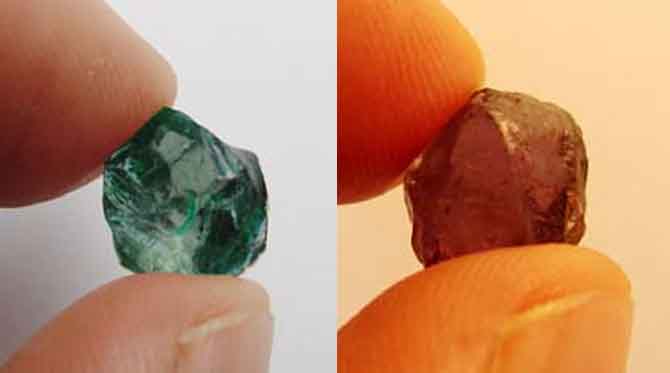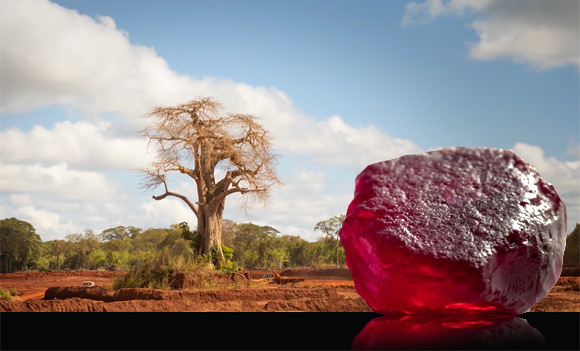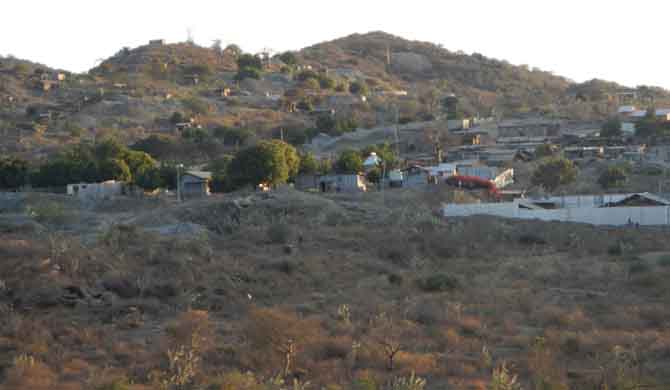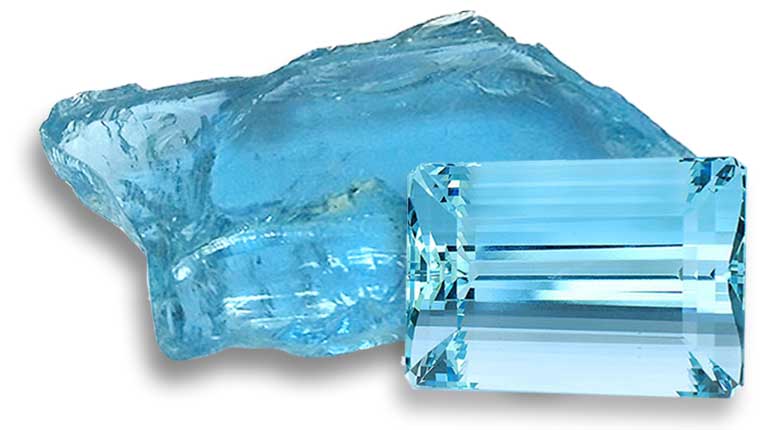With Tanzanite clarity grading, common sense prevails. In general terms, the cleaner, less included the Tanzanite the finer the quality. The finest stones are flawless whilst lower grade stones will contain various natural inclusions such as needles, feathers, and included crystals.
The more eye visible they are the lesser the grade. The
different grading systems in use in the market have different terms for
clarity.
The GIA’s top grade for example is VVS, even if a stone is flawless.
This is discussed in more depth later in the article. It is adviseable to ask
for a full description of the inclusions in the stone if a clarity survey is
not provided.

The photos above give a basic idea of some of the more
common inclusions found in Tanzanite; included crystals (sometimes called
"sugar" in the trade), needles and feathers.

The GIA Clarity Grading System
The Gemological Institute of America is one of the world’s
most respected authorities on colored gemstones and Diamonds. Its Diamond
grading system is the most universally accepted and widely used worldwide.
The GIA classifies different gem types into different
classifications depending on their propensity to contain inclusions.
GIA Gemstone Types
Type 1 (gemstones that are usually available in the
market inclusion free)
Type 2 (gemstones that are usually found with inclusions in the market)
Type 3 (gemstones that are usually found with significant and numerous
inclusions in the market).
Type 3 stones, like Emerald have a high propensity to contain inclusions and
are thus graded more loosely in this system (a VVS grade Emerald for example
would contain the same inclusions as an SI Tanzanite).
Type 1 gems like
Tanzanite have a higher standard applied to them and are graded strictly. VVS
grades in type 1 gems usually means at least internally flawless.
The Clarity Grades in the System are:
VVS – This is the highest grade the GIA system allows.
Stones with this grade are flawless, or near flawless. If they contain
inclusions, they should be minute inclusions that are difficult to see using
10X, and are not visible at all to the naked eye.
VS - Minor inclusions that are easier to see using 10X, but still not
visible to the naked eye.
SI1 - The inclusions are easily seen using 10X, and are noticeable with
the naked eye.
SI2 - The inclusions are more easily seen using 10X, and are quite visible
with the naked eye.
I1 - The inclusions are very obvious and they have a moderate negative
effect on the over-all appearance or durability of the gemstone.
I2 - The inclusions are very obvious and they have a severe negative
effect on the over-all appearance or durability of the gemstone.
I3 - The inclusions are very obvious and they have a severe negative
effect on both the over-all appearance and durability of the gemstone.
Clarity Grading is the one area that I slightly disagree with the GIA system.
There is no Flawless or Internally Flawless grade, unlike their Diamond Grading
System. In the trade, with colored stones, it was always accepted that if an
expert was unable to ascertain any inclusions at 10x then it was considered
flawless.
The end result is to force a grader to apply a VVS grade even to a
flawless stone. Generally speaking, a VVS grade applied to a Type 1 gemstone
generally implies at least internally flawless clarity.

The Tanzanite Foundation Clarity
Grading System
This system applies the following grades
to clarity:
EC – Eye Clean
SI – Slightly Included
MI – Moderately Included
HI – Heavily Included
This chart shows how these grades are appled :

The EC grade stands for "Eye Clean" and generally
you will not be able to ascertain any inclusions with your naked eye.
SI stands for "Slightly Included" and
although small, you will be able to ascertain some small inclusions with
your naked eye. Some typical SI inclusions would be small feathers, light
included crystals, faint clouds, possible a low relief needle or two.
MI stands for Moderately Included - with this grade you
will easily see inclusions with your naked eye. Higher relief needles, larger
included crystals and more prominent feathers.
HI stands for "Highly Included" and with this
grade inclusions will be large, multiple and high relief.
There are of course, many other systems in use but most are
a hybrid of the above two, so an understanding of these should be sufficient to
gain a good overview.



